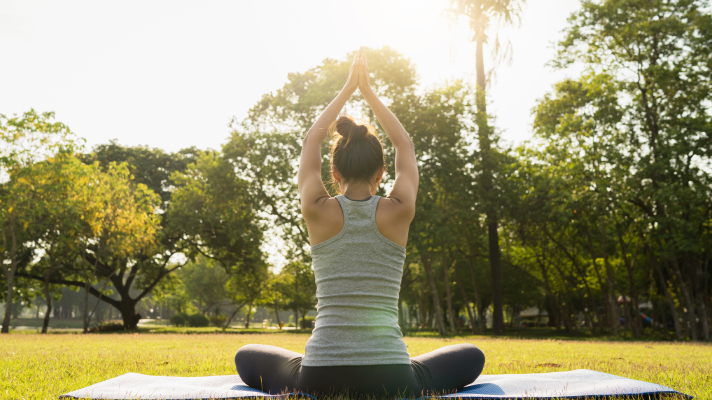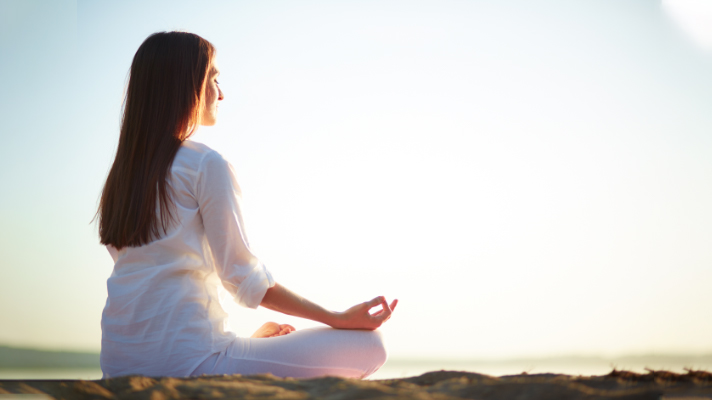
Nowadays, people are always busy. They are busy to the extent that their minds are always occupied by various thoughts and worries. If you think about it, overthinking and being worried is something that often leaves us restless and stressed.
From time to time, we all need peace and relaxation to calm and control the mind. This is where the practice of yoga and meditation comes in.
ALSO CHECK: Importance of Sports to Health
Yoga and meditation go hand-in-hand and they are both considered as an alternative form of exercise that helps keep the mind and body happy. To be more precise, yoga will help you improve your balance, flexibility, strength, and endurance, while meditation will help you strengthen your immune system, keep the mind sharp and focused, and it can relieve stress and anxiety.
Yoga and meditation is not something that became trendy because of Social Media. This practice has been around for centuries –Haga yoga practice can be traced back to the 11th century in India.
Over the years, there are quite a number of research studies conducted and they all concluded that yoga and meditation come with a lot of benefits when practiced regularly.
If you’d like to learn more about the benefits of yoga and meditation, you are reading the right article.
Keep reading!
What is Yoga, Exactly?
It is a term used to describe a variety of movement styles. You can think of yoga as a group of physical, mental and spiritual disciplines that have their origins in ancient India and the Himalayas. The Bhagavad Gita gave this sweet description of yoga:
"Yoga is the journey of the self, through the self, to the self."

Generally speaking, yoga is a system that recognizes the multi-dimensional of humans as it focuses on the body, the mind and the spirit. Yoga has six branches that represent a different set of characteristics and focus. These branches are:
- Hatha Yoga: This branch focuses on the physical and mental side so as to prime the body and mind.
- Raja Yoga: this branch consists of meditation as well as the strict commitment to the “8 limbs” –a series of disciplinary steps of yoga.
- Karma Yoga: this branch aims to create a future that is free from any sort of negativity and selfishness.
- Bhakti Yoga: this branch is focuses on establishing a path of devotion, cultivating tolerance and acceptance as well as a positive way to channel emotions.
- Jnana Yoga: this division of yoga focuses on wisdom, developing the intellect through studying and the path of the scholar.
- Tantra Yoga: this branch is the pathway of ritual or consummation of a relationship.
So, when you are considering going for yoga, having a specific goal will help you choose the most appropriate branch to follow.
What is Meditation?
Meditation is a mental exercise that uses a technique to train awareness and focus, and achieve a mentally clear and healthy sense of perspective. This mental exercise is to the mind what physical exercise is to the body. It is usually done individually, with eyes closed in a quiet place.

When meditating, you are not turning off your thoughts or feelings, but you're learning to be observant without judgment. People meditate for different reasons, and it means different things to different people. But, more often than not, people meditate because of these 3 things:
- Specific Benefit: improving one’s performance, health, focus and wellbeing.
- Growth: learning to let go, self-knowledge, emotional healing, and self-discipline.
- Spirituality: making a connection with God, seeking inner peace, self-love and other spiritual goals.
Benefits of Yoga and Meditation
Yoga and meditation is a practice associated with many possible benefits, including reduced back pain, improved mood, better sleep and less stress. Outlined below are some of the benefits of yoga and meditation.
1. Treats Back Pain
Sometimes you don’t have to go to the hospital or take meds to treat chronic back pain; sometimes all you need yoga. This might sound unbelievable, but there are several studies that have concluded that stretching exercises as well as poses can improve spinal flexibility and ease back pain in just seven days of doing yoga.
2. Helps with Rheumatoid Arthritis
There is a type of yoga known as Iyengar yoga that has proved to be a remedy for people with rheumatoid arthritis (RA). One study indicated that people with the RA disease who practiced Iyengar yoga decreased their inflammatory markers after two months than people who use medication. However, despite being helpful for RA, experts advise that some styles of yoga should be approached with caution.
3. Cures Hangover
Many people enjoy spending nights out and getting drunk, but they hate the morning-after misery from getting drunk. It's no secret that a hangover will leave you with muscle aches, nausea and fatigue. But this is nothing to worry about, because a hangover can be cured by doing certain yoga poses such as: plow, shoulder stand, bow, etc. As you do yoga, when nursing a hangover, you bring more circulation to the brain and your body eventually spring back to normalcy.

4. Improves Heart Health
If you have a heart problem, you might want to take up yoga and meditation. Even if you do not have any heart problems, doing yoga will help you keep your heart healthy. Yoga is said to reduce the risk of having a heart disease because of its cardiovascular benefits that remove arterial plaque. When done together with meditation, yoga can lower the heart rate and improve blood circulation in the body.
5. Helps You Sleep Better
Suffering from insomnia? Try yoga.
Most of the time people think of yoga as only beneficial for improving flexibility, core strength and stress levels, but it can also help improve your sleep. If a person suffering from insomnia performs yoga regularly, they easily fall asleep and they sleep for longer. Practicing yoga twice a day will help reduce anxiety and stress –which are the most common causes of insomnia.

The good news with yoga and meditation is that it’s never too late to start. You can start but doing one or two sessions per week, and then you find ways to fit more sessions into your schedule. To get the most benefits, you should select one branch of yoga that suits your individual needs.
This content is edited by Flymedi Medical Editors in November 2019
Take The First Step Get Started!
Our team will dedicate their effort and time to help you choose the clinic best for you. Our goal is not just to find ‘a doctor’ for you, but to find ‘the right doctor’.










Very nice article and practical benefits. Thanks for sharing.